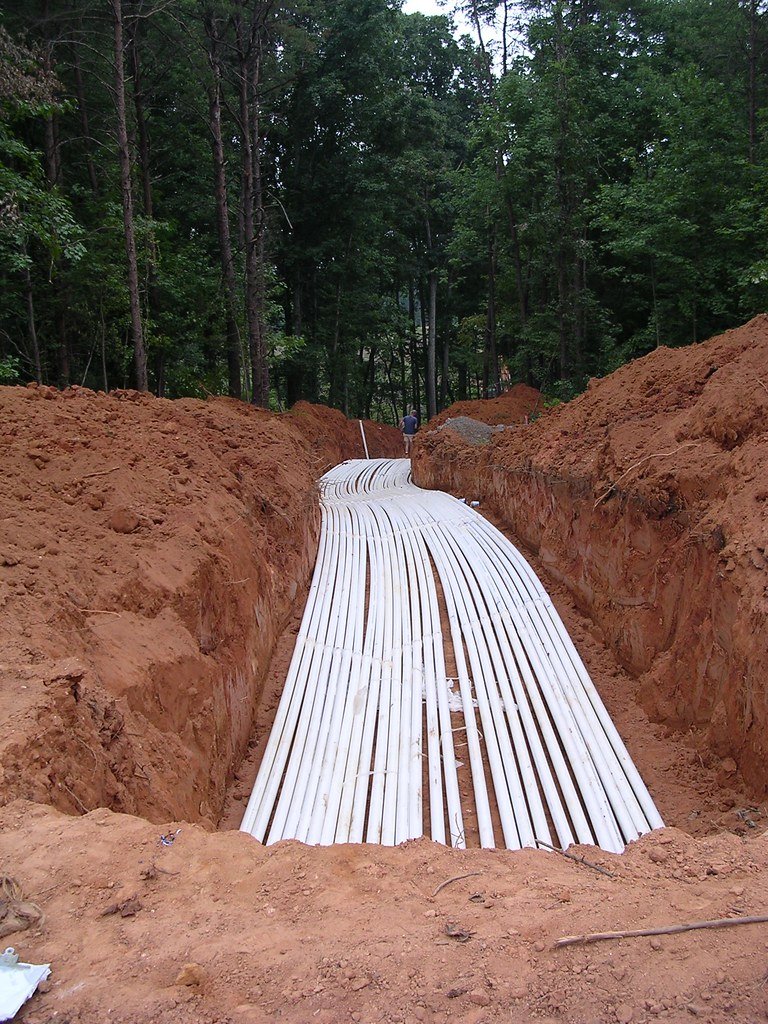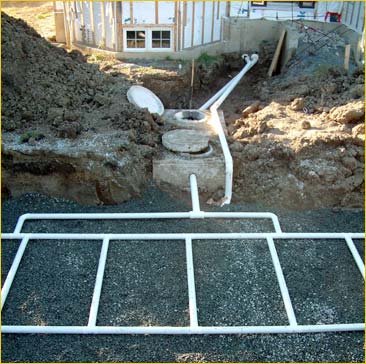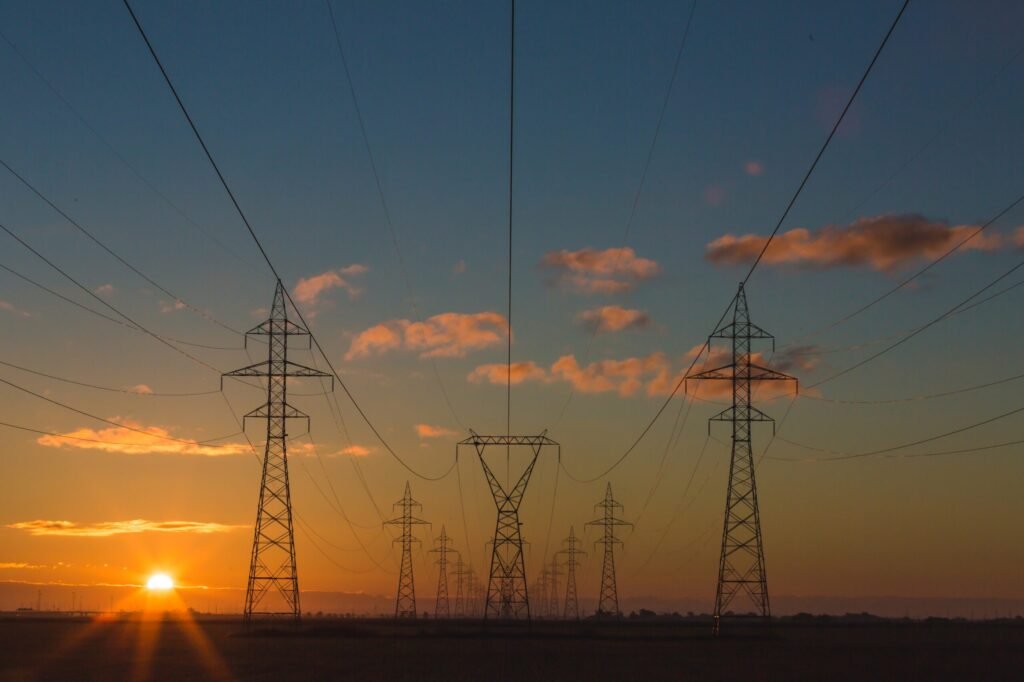Now Reading: How to Build a DIY Off-Grid Sewage System
-
01
How to Build a DIY Off-Grid Sewage System

How to Build a DIY Off-Grid Sewage System
Living off the grid comes with a sense of empowerment, a freedom from reliance on conventional systems and a closer connection with nature. However, achieving total self-sustainability entails more than just generating your own electricity or collecting rainwater. One vital aspect often overlooked is establishing a sustainable sewage system that operates independently from public infrastructure. Delving deep into the world of innovative solutions, this article unveils the secrets behind building your own DIY off-grid sewage system. So, whether you are an intrepid explorer, a passionate eco-warrior, or simply yearn for self-sufficiency, get ready to dig into the fascinating realm of off-grid sanitation, and discover how to keep that delicate balance between living in harmony with nature and maintaining a high standard of hygiene.
Table of Contents
- Introduction: Understanding the Basics of an Off-Grid Sewage System
- Planning your DIY Off-Grid Sewage System: Key Considerations and Design Factors to Account For
- Selecting the Right Components: A Comprehensive Guide to Choosing Materials and Equipment
- Step-by-Step Installation: Building Your Off-Grid Sewage System from the Ground Up
- Maintenance and Upkeep: Ensuring the Longevity and Efficiency of your DIY Off-Grid Sewage System
- Q&A
- In Summary

Introduction: Understanding the Basics of an Off-Grid Sewage System
When it comes to sustainable living, off-grid systems are paving the way for a more self-sufficient lifestyle. One critical aspect of off-grid living is the management of sewage, which often goes unnoticed but plays a crucial role in environmental responsibility. In this post, we will delve into the fundamentals of an off-grid sewage system, exploring its different components and how they work together to create a sustainable solution.
First and foremost, an off-grid sewage system aims to safely and efficiently dispose of human waste while minimizing its impact on the environment. Unlike traditional sewage systems that rely on municipal infrastructure, off-grid systems are self-contained, allowing homeowners to manage their waste without relying on external support.
Let’s take a closer look at some key components of an off-grid sewage system:
- Septic tank: This underground chamber is responsible for solid waste breakdown through anaerobic bacterial action. The septic tank separates solids and liquids, allowing bacteria to decompose organic matter before the liquid wastewater moves on to the next stage.
- Leach field: Also known as a drain field, this component is crucial in treating and dispersing wastewater into the surrounding soil. Its design and size are determined by factors such as soil type, water table level, and the number of users.
- Greywater system: In an off-grid sewage system, recycling and reusing wastewater is a priority. Greywater, which includes water from sinks, showers, and washing machines, can be treated and reused for non-potable purposes such as irrigation and flushing toilets, reducing water consumption.
By understanding the basics of an off-grid sewage system, we can appreciate the importance of sustainable waste management and the positive impact it can have on our environment. Join us as we explore further into the intricate workings of these systems and the innovative solutions available for off-grid homeowners.

Planning your DIY Off-Grid Sewage System: Key Considerations and Design Factors to Account For
1. Local Regulations and Permits:
- Research the local laws and regulations regarding sewage systems in your area.
- Contact your local authorities to obtain the necessary permits and understand any restrictions.
- Ensure compliance with environmental guidelines to protect the surrounding ecosystem.
2. Site Evaluation:
- Conduct a thorough soil analysis to determine its permeability and suitability for a septic tank or alternative system.
- Consider the landscape, water table levels, and proximity to water sources such as wells or rivers.
- Identify potential obstacles or limitations, like high groundwater levels or rocky terrain, that might impact your system’s performance.
3. System Design:
- Choose between conventional septic systems or alternative options like composting toilets or greywater treatment systems.
- Size your system based on household needs and the estimated wastewater volume.
- Designate an appropriate location for the septic tank, leach field, drainfield, or other components.
- Incorporate safety measures to prevent contamination, such as installing a proper vent and waterproofing for the system.
4. Maintenance and Operation:
- Develop a regular maintenance plan that includes proper tank cleaning, inspection, and necessary repairs.
- Educate yourself on best practices for waste disposal and use of septic-safe cleaning products.
- Regularly monitor the system’s performance, including checking for any signs of leakage or blockage.
Note: This guide is intended to provide general information for planning a DIY off-grid sewage system. It is crucial to consult with professionals, such as engineers or wastewater experts, for a comprehensive evaluation and personalized advice based on your specific circumstances.
Selecting the Right Components: A Comprehensive Guide to Choosing Materials and Equipment
Welcome to our comprehensive guide on selecting the perfect components for your projects. Whether you’re a seasoned professional or a beginner, choosing the right materials and equipment is essential for achieving the desired results. In this section, we’ll walk you through the key factors to consider and provide you with valuable tips and tricks to make the selection process a breeze.
Key Factors to Consider:
1. Project Requirements: Before diving into the vast sea of options, it’s crucial to clearly define your project requirements. Ask yourself questions like: What is the intended purpose of the project? What are the specific functionalities and specifications it should meet? This step will help you narrow down your choices and focus on components that align with your project’s goals.
2. Budget: In any project, budget considerations play a significant role. It’s essential to strike a balance between quality and affordability. Researching various suppliers, comparing prices, and reading reviews can help you find the right components that fit your budget.
3. Quality and Reliability: When choosing materials and equipment, never compromise on quality. Look for reputable brands and suppliers known for their reliability. Remember, using subpar components can lead to inefficiency, project delays, and even safety hazards. Always aim for durability, functionality, and overall performance to ensure a successful outcome.
Step-by-Step Installation: Building Your Off-Grid Sewage System from the Ground Up
Preparation:
Before diving into the step-by-step installation process, it’s crucial to gather all the necessary materials and familiarize yourself with local regulations regarding off-grid sewage systems. Ensuring you have the proper permits and understanding any restrictions will help streamline the installation process.
- Research local regulations and obtain necessary permits.
- Consult with a professional to assess the soil conditions and determine the ideal location for your sewage system.
- Procure the required materials, such as septic tanks, pipes, drain fields, and venting systems.
- Gather essential tools including shovels, trowels, a level, measuring tape, and safety gear.
Step 1: Excavation and Tank Placement:
The first step in building your off-grid sewage system is excavating the area and placing the septic tank. Dig a hole deep enough to accommodate the septic tank and ensure proper slope for efficient drainage.
- Mark the area for excavation and carefully remove any obstructions like roots or rocks.
- Using a shovel or an excavator, dig a hole with a depth that adheres to local regulations and allows for desired tank placement.
- Once the hole is ready, carefully lower the septic tank into place, ensuring it is level and stable.
- Make sure to connect the tank’s inlet and outlet pipes to your building’s plumbing.
Step 2: Installation of Drain Fields:
After successfully placing the septic tank, attention must be turned towards the installation of drain fields. These fields allow wastewater to be safely dispersed into the surrounding soil.
- Determine the size and layout of your drain fields, considering factors such as soil absorption rates and local guidelines.
- Dig trenches according to the planned layout, ensuring consistent depth and slope.
- Install perforated pipes in the trenches, covering them with geotextile fabric to prevent clogging.
- Backfill the trenches with soil, ensuring proper compaction to maintain even drainage.
Remember, building an off-grid sewage system demands precision and adherence to local regulations. Seek professional assistance if needed, as ensuring the proper installation will contribute to the long-term efficiency and sustainability of your system.
Maintenance and Upkeep: Ensuring the Longevity and Efficiency of your DIY Off-Grid Sewage System
When it comes to your DIY off-grid sewage system, proper maintenance and regular upkeep are vital for its longevity and efficiency. Here are a few tips and guidelines to help you keep your system running smoothly:
- Regular Inspection: Schedule routine inspections to check for any signs of wear and tear or potential issues. This includes examining pipes, tanks, and filters. Addressing minor problems before they escalate can save you from major headaches down the line.
- Septic Tank Pumping: It’s crucial to have your septic tank pumped and cleaned at regular intervals, as recommended by professionals. This helps prevent the accumulation of solids and ensures smooth operation. Remember, a well-maintained septic tank lasts longer!
- Efficient Water Usage: Conserving water not only benefits the environment but also helps your sewage system work efficiently. Install low-flow fixtures, fix any leaks promptly, and consider incorporating greywater recycling to reduce the strain on your system.
- Proper Waste Disposal: Avoid flushing non-biodegradable items or hazardous chemicals down the drain. These can clog the pipes and cause serious damage to your system. Dispose of such waste responsibly to minimize the risk of system malfunctions.
- Regular Maintenance Tasks: Some routine tasks include cleaning filters, inspecting and repairing pipes, and ensuring proper ventilation. Keep a maintenance schedule and complete these tasks diligently to maintain peak performance.
By following these maintenance tips, you can ensure that your DIY off-grid sewage system operates efficiently and stays in good condition for years to come. Remember, a little care and attention go a long way in preserving the functionality and longevity of your system!
Q&A
What is an off-grid sewage system?
An off-grid sewage system is a self-contained waste management system that does not rely on external infrastructure. It allows individuals or communities living in remote areas or eco-friendly enthusiasts to dispose of human waste safely and sustainably.
Why should I consider building a DIY off-grid sewage system?
Building your own off-grid sewage system can bring various advantages such as increased self-sufficiency, reduced environmental impact, and cost savings. It allows you to have control over waste management without depending on centralized systems.
What are the key components of a DIY off-grid sewage system?
A typical DIY off-grid sewage system includes a composting toilet, a septic tank or a leach field, and an effective method for treating and disposing of graywater. These components work together to ensure efficient and eco-friendly waste management.
What is the first step in building a DIY off-grid sewage system?
The first step is to assess your specific needs and the local regulations. Understand the soil composition, groundwater level, and any legal requirements that may apply to your area. This will help you choose the appropriate system and design for your off-grid sewage system.
How can I build a composting toilet for my off-grid sewage system?
To build a composting toilet, start by separating the waste from liquid and solid waste. Use organic materials like sawdust or peat moss to cover the solid waste, aiding in the decomposition process. Regularly turn the compost to promote aerobic decomposition.
What options are available for treating graywater in an off-grid sewage system?
Graywater can be treated using an array of methods, including sand filters, constructed wetlands, or using biological agents like effective microorganisms. Each method has its own benefits and requirements, so choose one that suits your specific situation and preferences.
Can I reuse the treated graywater from my off-grid sewage system?
Yes, treated graywater can be reused for various purposes such as irrigation, toilet flushing, or even non-potable household uses. However, it is crucial to ensure the treated water meets the necessary quality standards and that any potential health risks are minimized.
What maintenance is required for a DIY off-grid sewage system?
Regular maintenance of an off-grid sewage system involves monitoring and emptying the composting toilet, inspecting the septic tank or leach field for any signs of issues, and periodically checking and cleaning the graywater treatment system. Proper maintenance ensures optimal performance and longevity of the system.
Are there any precautions or risks associated with building a DIY off-grid sewage system?
While building a DIY off-grid sewage system is a rewarding project, it is important to ensure that it meets local regulations and health standards. Improper design, installation, or maintenance can result in environmental contamination or health hazards, so always proceed with caution and seek professional advice if needed.
In Summary
As we wrap up this enlightening journey into the world of DIY off-grid sewage systems, it’s clear that we have tapped into an often-overlooked realm of sustainable living. From wandering the vast wilderness to nesting in our cozy cabins, this guide empowers us to venture beyond the confines of traditional infrastructure.
Remember, the key to success lies in understanding our unique needs and the environment in which we reside. With a little creativity and a lot of determination, we have unleashed the power to build our very own self-sufficient sewage system.
So, embrace the thrill of embarking on this remarkable sustainable odyssey. Become the architect of your own destiny as you fashion a sewage system that perfectly complements your off-grid lifestyle.
But, a word of caution: DIY off-grid sewage systems demand constant vigilance. Monitor and maintain your system regularly to ensure its seamless operation, fostering a harmonious relationship between human life and nature. Respect the delicate balance and symbiosis between you and your surroundings, for in these actions lies the true essence of living off the grid.
As you bid farewell to this article, remember that the path to embracing self-sufficiency extends far beyond just sewage systems. It is a lifelong commitment towards sustainable choices, where innovation meets preservation. So, let this be a stepping stone, a catalyst to achieving a more balanced and eco-conscious existence.
Happy tinkering, intrepid souls, and may the wonders of sustainable living take you to extraordinary places, both within and beyond your off-grid haven.
As an affiliate, my content may feature links to products I personally use and recommend. By taking action, like subscribing or making a purchase, you’ll be supporting my work and fueling my taco cravings at the same time. Win-win, right?
Want to read more? Check out our Affiliate Disclosure page.





